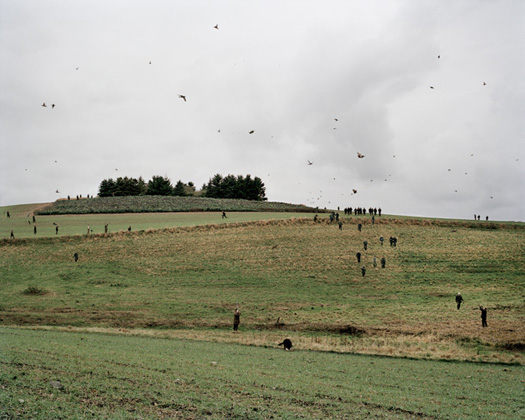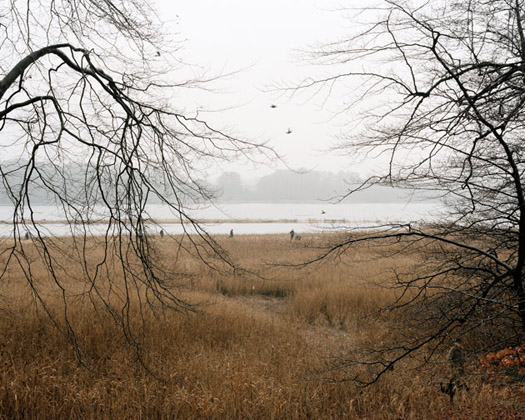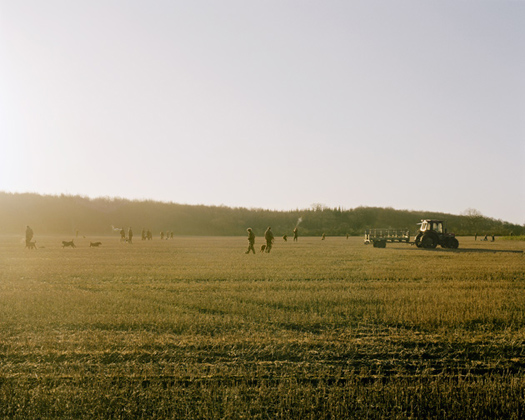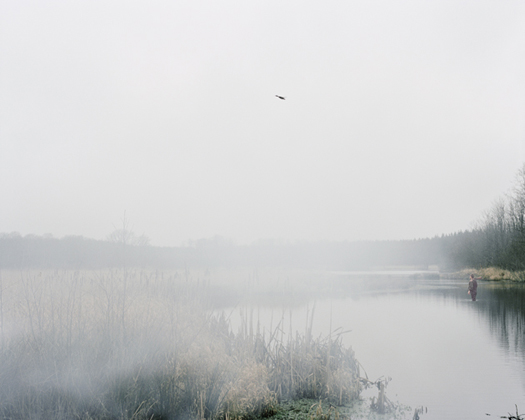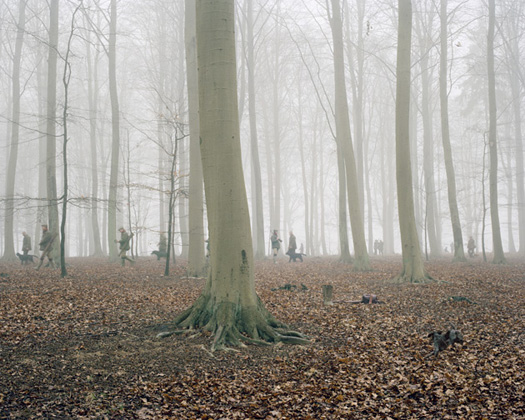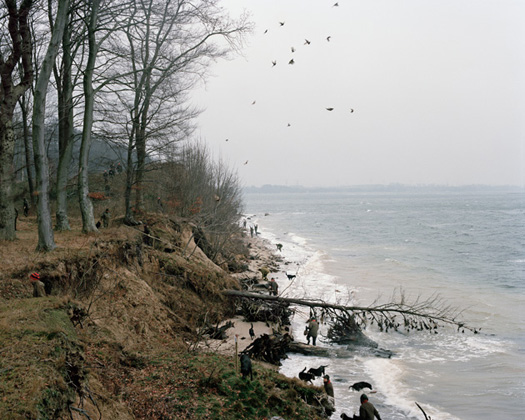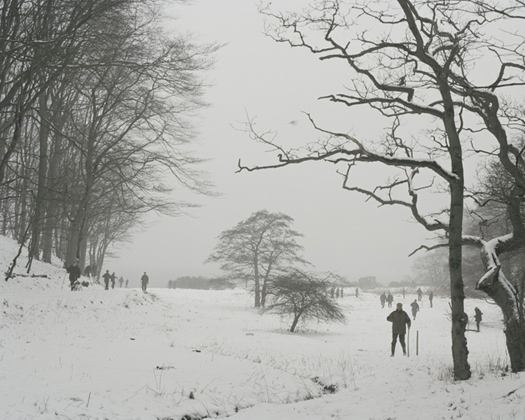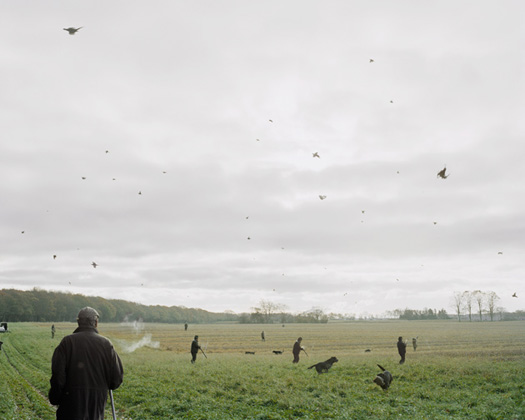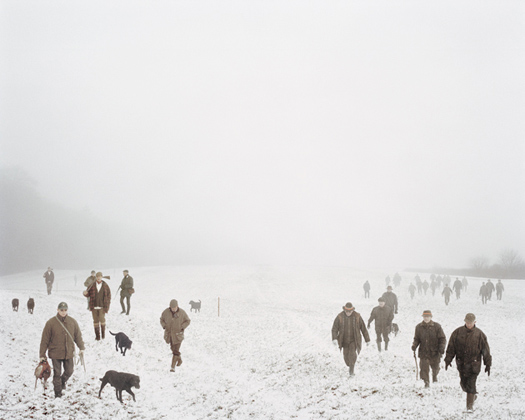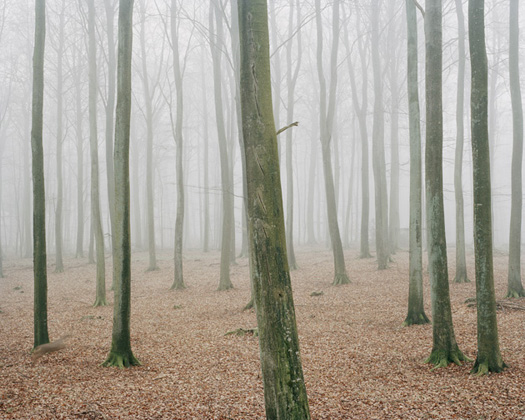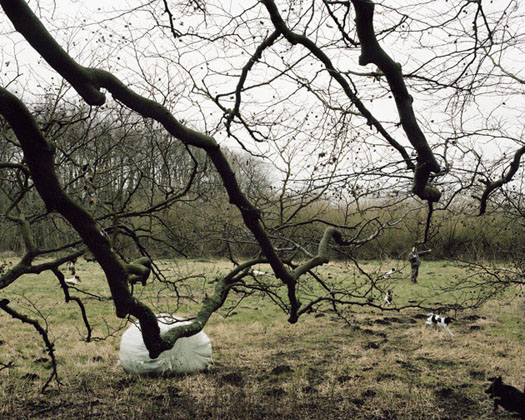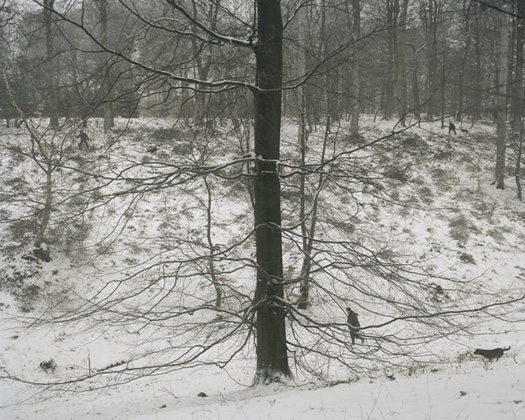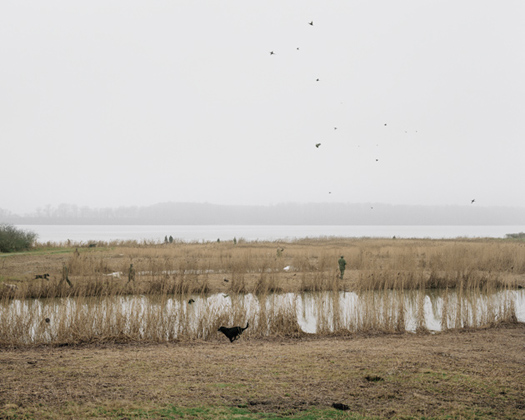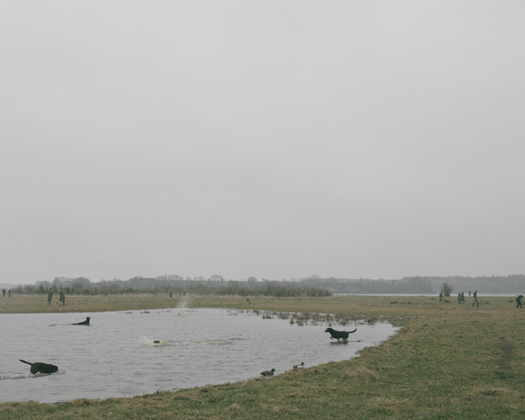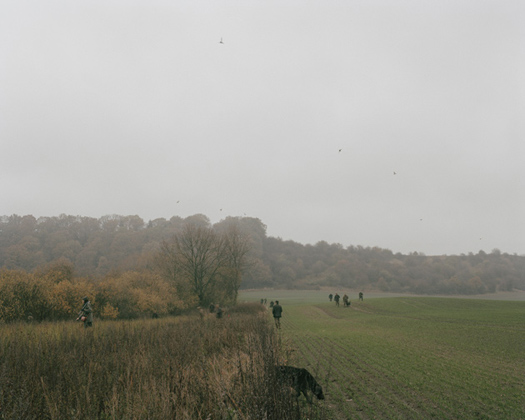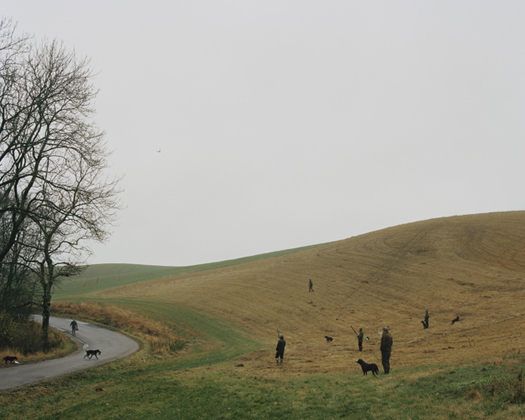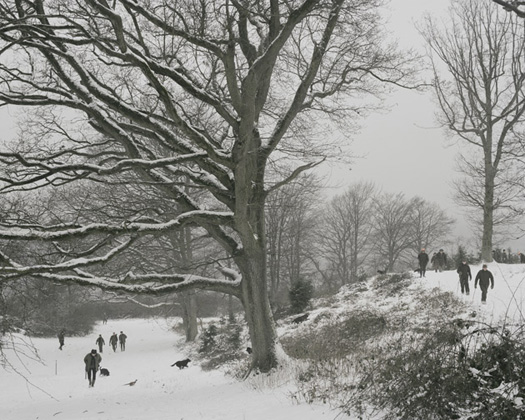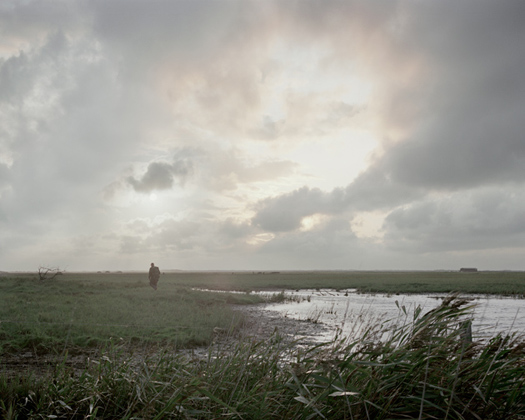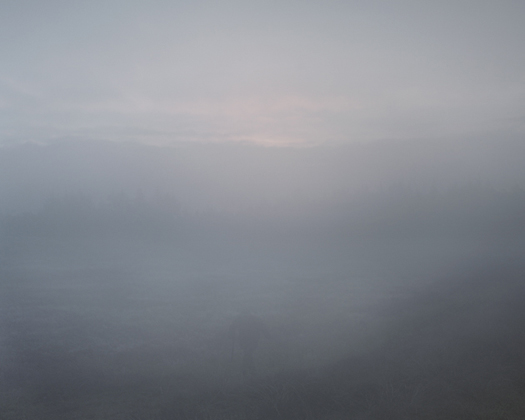In How to Hunt we use the modern hunt to explore the relationship of humans to nature. Hunting today can be seen as a ritualised performance of something that was once a basic human need. It’s also a classical theme of art history, from cave paintings to the Renaissance. We wanted to locate this historical theme in a modern context, where – at least in the affluent post-industrial West – it can be seen as a symbol of ‘the good life’ and the longing for some kind of authentic relationship to nature.
This thread is central to How to Hunt. There’s no blood, no guts – the kill itself is not in focus. Just as modern society chooses to elide the actual reality of slaughter, so our images are an aestheticised rendition of the hunt, reflecting its recreative rather than essential nature.
We chose to work digitally – to exploit the painterly potential of layering the images. Landscape painting is a source of inspiration, but our images also construct an apparently photographic reality, just as the apparently natural landscape is tamed, with reserves in a pre-mapped hunting ground and cabbage patches to feed the apparently ‘wild’ hunted. The images reflect a ‘manmade’ landscape, just as the hunt itself is carefully and predictably planned in advance. This repetitive, ritualised quality is something we choose to explore and reflect both methodically and visually. Each image is composed of multiple negatives from the same fixed p.o.v. The same frame repeated to reflect the movement of people and animals across the landscape, here represented simultaneously thus extending the photographic moment beyond a single click of the shutter. This visually condenses the period of the hunt, but also gives a far more interpretative representation of the entire experience than a single image.
We both come from a documentary tradition in which personal access and the ‘authentic’ moment of capture is central. In How to Hunt we chose not to ‘direct’, meet the gaze – or get personal. The intimacy and relationships central to our earlier individual works are here secondary. This represents a shift in working with photography for both of us – a move from intimacy to distance. Something reinforced by the choice of collaboration in which the immediacy of the one-on-one documentary tradition we both come from is replaced by a productive dialogue where nothing is ‘ours’ individually. In How to Hunt our intervention and interpretation comes not in but after the photographic moment.
Trine Søndergaard & Nicolai Howalt, 2007
in dialogue with Jane Rowley

